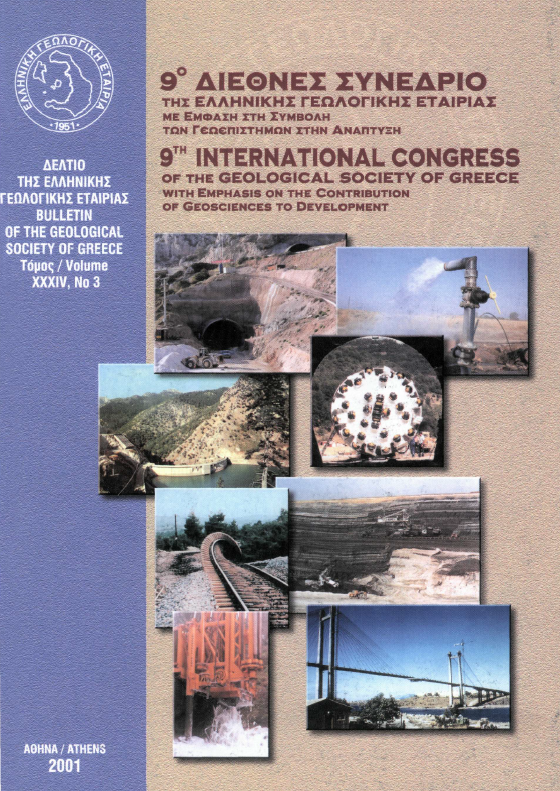FLUID INCLUSION STUDY IN ALPINOTYPE QUARTZ CRYSTALS FROM FISSURES IN PENTELICON MOUNTAIN
Abstract
Idiomorphic quartz crystals, up to 50 cm long, have been developed on massive, milky quartz substrate, within veins hosted by orthogneisses of the polymetamorphic system of the Pentelikon Mt. The veins fill NE-SW or/and NW-SE trending en-echelon fissures associated with the DfP deformation phase of Alpine age. Quartz-hosted fluid inclusions have been studied in order to decipher the physicochemical conditions of deposition and the relationship to the geotectonic evolution of the area. Homogenization temperatures (Th) to the liquid phase range between 175 and 240 °C clustering at 180-200 °C. Final ice melting temperatures (Tmjce) range between -0.1 and -14.5 °C corresponding to salinities between 0.2 and 23 wt% NaCI equiv. in the system HìO-NaCI. Thsalinity relationships indicate quartz crystallization under boiling conditions at temperatures 150-220 °C and pressures <1.5 Kbar. The results of this study indicate that quartz was deposited from hydrothermal fluids with a meteoric water component in the latest stages of retrograde metamorphism and regional decompressive uplift of the Pentelicon Mt metamorphic complex
Article Details
- How to Cite
-
Κίλιας Σ., Βουδούρης Π., Κατερινόπουλος Α., & Καβούρη Σ. (2004). FLUID INCLUSION STUDY IN ALPINOTYPE QUARTZ CRYSTALS FROM FISSURES IN PENTELICON MOUNTAIN. Bulletin of the Geological Society of Greece, 36(1), 526–533. https://doi.org/10.12681/bgsg.16749
- Section
- Petrology

This work is licensed under a Creative Commons Attribution-NonCommercial 4.0 International License.
Authors who publish with this journal agree to the following terms:
Authors retain copyright and grant the journal right of first publication with the work simultaneously licensed under a Creative Commons Attribution Non-Commercial License that allows others to share the work with an acknowledgement of the work's authorship and initial publication in this journal.
Authors are able to enter into separate, additional contractual arrangements for the non-exclusive distribution of the journal's published version of the work (e.g. post it to an institutional repository or publish it in a book), with an acknowledgement of its initial publication in this journal. Authors are permitted and encouraged to post their work online (preferably in institutional repositories or on their website) prior to and during the submission process, as it can lead to productive exchanges, as well as earlier and greater citation of published work.





